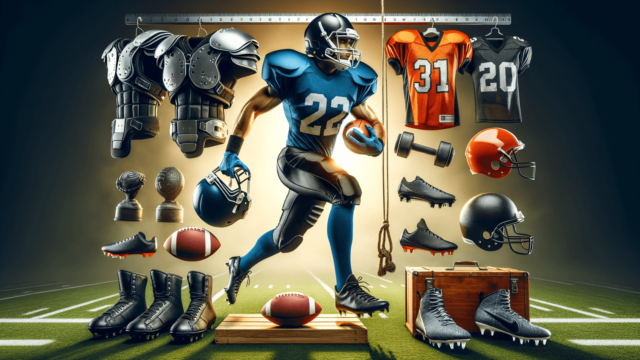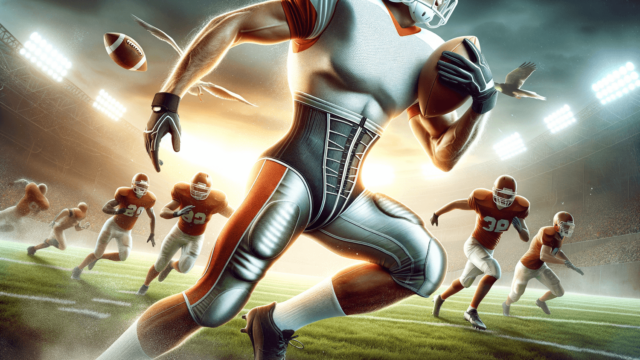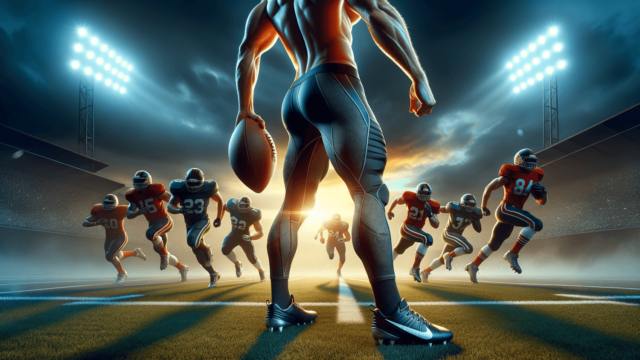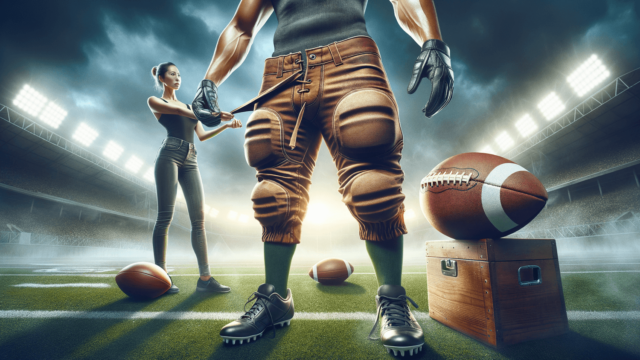
Football pads typically weigh between 4 to 8 pounds (1.8 to 3.6 kg) depending on the player’s position and the level of protection required. The weight distribution includes the shoulder pads, thigh and knee pads, hip and tailbone pads, as well as other optional protective gear.
Understanding Football Pads Weight
The significance of appropriate football padding is essential for player safety while ensuring agility on the field. The total weight of football pads varies depending on the position and protective requirements of the player. Football gear usually includes shoulder pads, thigh and knee pads, hip and tailbone pads, and other supplementary gear. This article breaks down the weight of different types of football pads, allowing players to make an informed decision.
Shoulder Pads: Crucial Protection for Upper Body
Standard Weight Ranges
Shoulder pads are crucial for safeguarding a player’s upper body. The weight varies depending on the position played and the size of the player. Typically, shoulder pads weigh between 3 to 5 pounds (1.4 to 2.3 kg).
Position-specific Shoulder Pads
Some positions require specialized shoulder pads, and these variations affect the weight of the gear. Quarterbacks and wide receivers typically wear lighter shoulder pads to maintain mobility, while linemen may wear heavier pads to protect against more powerful collisions.
Lower Body Pads: Essential for Optimal Performance
Thigh and Knee Pads
Thigh and knee pads offer essential protection for the legs, especially during tackles and contact with the ground. They generally weigh between 0.5 to 1.5 pounds (0.2 to 0.7 kg).
Hip and Tailbone Pads: Shielding the Pelvis
Hip and tailbone pads are vital for preserving the delicate pelvic region during collisions. The combined weight of hip and tailbone pads is approximately 1 to 2.5 pounds (0.5 to 1.1 kg).
Additional Protective Gear: Customizable Safety
Some players choose to wear additional protection to prevent injury. Such extra gear can include rib protectors, padded sleeves, or backplates. The addition of these items can add 0.5 to 1 pound (0.2 to 0.5 kg) to the overall weight of a player’s protective gear.
Finding the Right Football Pads for You
Selecting the right football pads is not only about finding the correct weight; it also involves ensuring that they fit well and offer sufficient protection. It is essential to choose padding based on the player’s position, body size, and level of aggression on the field. Trying out various options and consulting football professionals, coaches, or seasoned players can help you find the perfect balance between protection and agility.
The Effect of Football Pads on Performance
Football pads are designed to provide safety and maximize performance on the field. Every position has unique needs, and manufacturers have developed pads catering to those nuances. While lighter gear allows skill players to maintain their agility, more robust gear is necessary for those involved in more hard-hitting plays.
Materials and Construction for Football Pads
Advancements in material technology have enabled manufacturers to optimize football padding design for weight, performance, and durability. Football pads are primarily made of foam padding and hard plastic shells. High-density foam padding is used to absorb impact and provide cushioning, while rigid plastic is employed for structural support and protection. Innovations in materials have led to lighter and stronger pads that offer increased flexibility and protection during gameplay.
How Often to Replace Football Pads
To ensure maximum safety, football pads should be replaced periodically, as they suffer wear and tear over time. Though many factors play a role in determining when to replace pads, a general rule of thumb is to inspect them annually for signs of damage or excessive wear. If any signs of wear are found, replace the necessary components or the entire padding set. Additionally, pay careful attention to fit, as players’ growth spurts or body changes may require updated sizing to ensure proper protection.
FAQ: Football Pads Weight and Fit
Here are some frequently asked questions related to football pads weight, fit, and overall performance. Understanding these common concerns will assist players in making informed decisions about their football gear and enhance their gameplay experience.
1. How do I know if my football pads fit correctly?
A proper fit is essential for comfort, safety, and performance. Shoulder pads should cover the entire shoulder without restricting neck movement, and straps should be snug without being too tight. Hip, thigh, and knee pads should fit comfortably without impeding motion and should stay in place during gameplay.
2. Do all football players need to wear the same type and weight of pads?
No, the type and weight of football pads should be selected based on the player’s position and their specific protection requirements. Skilled position players may opt for lighter pads to maintain mobility, while players in more physical positions may need heavier padding to withstand increased impact.
3. How can I lighten the overall weight of my football pads while ensuring safety?
To maintain protection while reducing weight, consider selecting padding made from advanced materials that offer greater strength and lighter weights. Additionally, work with coaches or experienced players to identify which pads are best suited to your position without sacrificing safety.
4. Can football pads be customized?
Yes, many manufacturers provide customizable football pads that can be adjusted for comfort, fit, and protection. Explore options that allow for altering padding thickness, shell materials, or integrating additional protective gear like backplates or rib protectors as needed.
5. How do I properly maintain my football pads to maximize their lifespan and performance?
Proper maintenance entails regular inspection for signs of wear, damage, or compromised padding, and replacing any necessary components. Additionally, cleaning your pads by following the manufacturer’s instructions helps prevent mold, mildew, and odor, ensuring optimal performance and longevity.
Featured Posts
- No pillar pages found.





